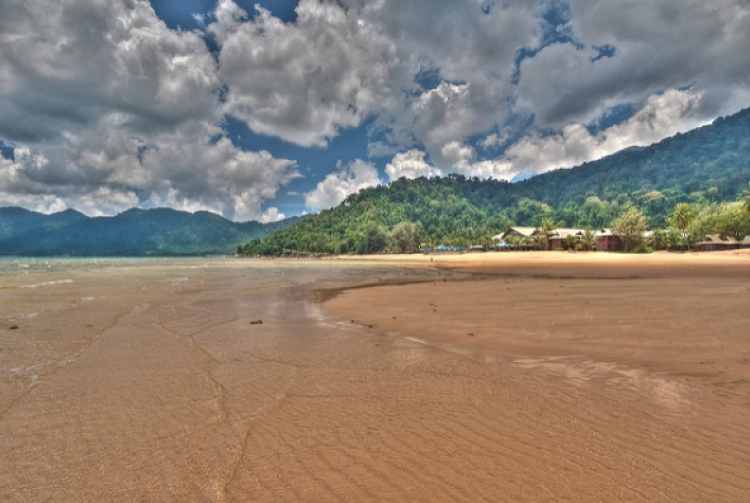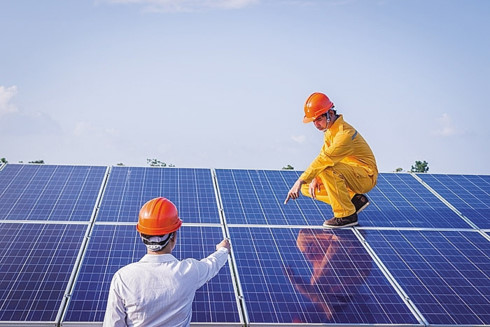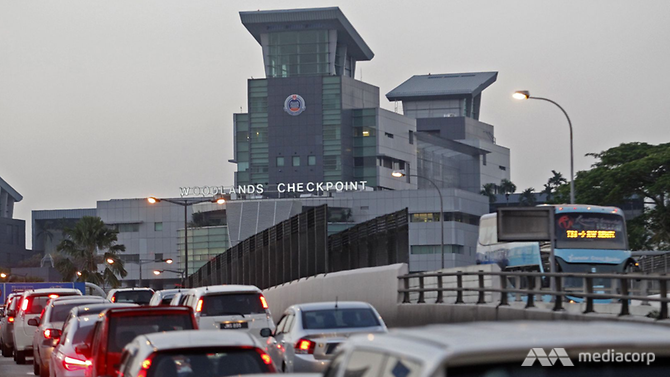Vietnam will likely face a power shortage during 2020-2030 if electricity generation is not increased and there is not enough fuel (coal and gas) for generation.
It is forecast that the demand for electricity will continue to grow at a high level until 2030.
The power sector will need to ensure 265-278 billion kWh of output by 2020 and around 572-632 billion kWh by 2030.
The growth rate in the 2016-2020 period will be 10.3-11.3 per cent per year and about 8-8.5 per cent between 2021 and 2030.
Insufficient power supply could lead to a heavier reliance on imported fuel, especially in power generation, while the higher demand would also place greater pressure on power infrastructure, which might not be improved quickly enough due to lack of funding.
In addition to these challenges, Vietnam could face greater environmental impacts from an increased demand and a higher proportion of fossil fuels, especially coal in the energy mix.
With the country’s energy demand projected to increase by more than 10 per cent annually in the next five years, the government is moving forward to develop renewable energy sources to ensure energy security and address the growing power demand.
Although the power market is witnessing a boom in solar power projects as local and foreign investors are racing to reap the benefits of the 9.35 US cent feed-in-tariff, which ends in June 2019, the power grid and transmission remain a concern.
According to the latest data showing a total of 332 solar projects registered with the total capacity of 26,290MWp, including 121 projects with the total capacity of 7,234MWp that will begin to generate electricity by 2020 and 211 others (13,069MWp) are waiting for approval, these figures have far exceeded the revised Power Development Plan VII.
Venu Nuguri, group senior vice president, ABB’s Power Grids Division in South Asia, the Middle East, and Africa, said at a recent forum that balancing variable power supply and demand has always been a challenge, but as the share of renewables in total generation in many countries is growing, this challenge is becoming more critical.
Nguyen Duc Cuong, director of the National Load Dispatch Centre (A0), also pointed out that the southern central region is home to the brunt of the nation’s renewable energy sources, but local power grid conditions are not prepared to adopt this kind of energy.
“It takes three years, on average, to build a power grid project, while a solar power project needs only one year to put in place.
As a result, electric grid development cannot catch up with the proliferation of solar and wind power projects,” he explained.
For especially, the transmission networks of the central province of Ninh Thuan and Binh Thuan are not developed enough.
There are warnings that if too many solar power projects are plugged into the system in the region, they could cause a network overload.
A0 will step in to tackle the situation through forcing the plants to reduce their power generation capacity to a suitable level.
Thus, promoting rooftop solar power is one of the solutions to address the imminent shortage of power, as the solar market all over the globe works to make our mother earth a healthy and secure place to live.
A solar rooftop panel only requires space and abundant sunlight to work efficiently, and batteries to store unused energy will cover cloudy days.
Rooftop is going green
Rooftop solar has never been more affordable for home and business owners and communities as it can help households reduce monthly electricity bills by half, contributing to protecting the environment.
Experts from an EU consultant group shared the results of a four-month pilot project on rooftop solar power in the central city of Danang. Industrial zones (IZs) are good places to build solar panels because they have large rooftops and strong electrical connections already available.
“The cost of solar power installation in Vietnam is lower than in countries such as the US,” Chad Laurent, expert of EU Energy Initiative Partnership Dialogue Facility’s consultants group, said. “There are favourable conditions for businesses to invest in solar power.”
Citing statistics from the World Bank, Vo Quang Lam, deputy general director of Electricity of Vietnam (EVN), said that some 6,000MW of energy will be turned out in Ho Chi Minh City if the city develops rooftop solar power projects.
With the huge potential of solar power, an EVN representative said that the group will launch a campaign to encourage residents and businesses to install solar panels at IZs and farms, as well as the rooftops of homes.
Also, Lam said that EVN is in the process of asking power generators to boost solar panel installations, contributing to reducing pressure on the national power grid.
In addition, he said that EVN is considering developing rooftop solar power in the northern provinces, despite there being fewer hours of sunlight than in the south.
Ho Chi Minh City alone has seen over 748 rooftop solar power owners registering to sell their surplus electricity to Ho Chi Minh City Power Corporation, with a combined capacity of 11.55MWp.
It sets up the target to restructure power usage towards a higher rate of renewable energy to reach 1-1.74 per cent of the city’s total consumption and focusing on developing solar energy, particularly rooftop solar power.
In Vietnam, IREX, a member of SolarBK, is one of the solar energy leaders in installations for large projects and for residential needs alike. The company’s strength is in the direct production of solar panels and components, such as PV modules and cells, made to international standards.
To step up its game, SolarBK has invested in a new high-tech energy equipment complex in Phu My I Industrial Zone in the southern province of Ba Ria-Vung Tau as well as presented BigK – the first rooftop solar power system in Vietnam accompanied by electricity insurance and finance services by teaming up with Bank for Investment and Development of Vietnam Insurance JSC (BIC); BIDV Insurance Corporation and team up with Germany-based Munich RE to get PV insurance and protect itself against manufacturer’s risk. These moves aim to encourage more people to use renewable energy in the future as the industry is still in its nascent stage.
The Vietnam Business Forum (VBF) suggested the Ministry of Industry and Trade (MoIT) to consider increasing the exemptions for power operation licence from 1 to 3MW to capture the benefits of investment in solar rooftop energy systems.
Besides, many private developers have signed power purchasing agreements (PPAs) with EVN to deliver excess electricity from rooftop solar systems to EVN.
They have also reported delays in payments under the net metering scheme.
EVN has indicated to the VBF that the treatment of the value-added tax on PPA power sales between building owners and EVN caused barriers to paying for electricity supplied to EVN from rooftop solar systems and indicated that it is trying to resolve the matter.
It also requested urgent attention from the Ministry of Finance and the MoIT to solve the issue and clarify when payments/credits will be made for electricity supplied.
VIR








